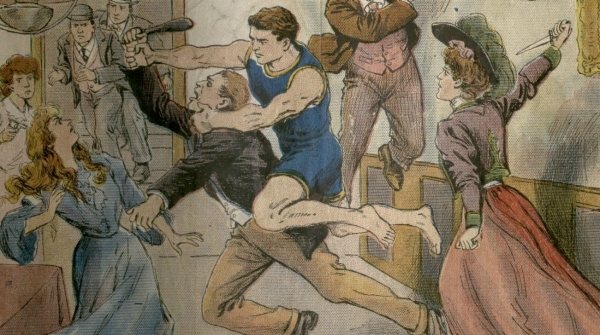In the late 1800s it was discovered that cheaply printed, serially published stories with snazzy, color covers – which could be mailed at a steep discount and were particularly marketed to young men – would sell like hotcakes at 5¢ each. And, although they were considered by responsible-type people to be a waste of time and money (and a terrible influence on the morals of those who read them) they flourished until postal rates changed…..and 5¢ could get a kid into the movies instead.
The dime novels of the Burns Library include only a small fraction of the myriad series issued by publishers Frank Tousey and Street & Smith of New York. Six series are represented here. All are in the category "nickel weeklies". Authors of nickel weeklies were identified by pen names and each pen name could be used by numerous authors. The creators of the wonderful cover illustrations are not identified. The social biases and stereotypical beliefs of many Americans at the turn of the twentieth century are on painfully full view in both cover and text. National ideals of self-reliance, loyalty, ingenuity, bravery and patriotism are here as well.
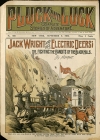
Jack Wright - the boy inventor - appeared in the Frank Tousey series "Pluck & Luck: Complete Stories of Adventure" from 1891-1904. All 120 stories featuring Jack were authored by Luis Senarens (1863-1939) writing as "Noname." Jack is one of the "Edisonade" heroes of dime novels. His incredible inventions are vehicles he uses to access every part of the globe. From his murdered father, Mad Bill, Jack has inherited an obsession with exploration of the ocean floor, and he has earned a fortune through his adventures. His sidekicks are Timothy Topstay and Fritz Schneider. The series is considered an early example of the science fiction genre, and its connection to the steampunk aesthetic is clear.
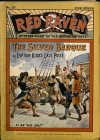
On their ship, the Red Raven, Thad Fergus and his pals Oliver and Simon battle pirate after pirate after pirate. Foes include Blackbeard, Morgan, Kidd, and others. "The Red Raven Library: Stirring Tales of Old Buccaneer Days" was published in 1905. The pen name "An Old Salt" was used by authors Thomas C. Harbaugh (1849-1924) and John DeMorgan (1848-1926). "The Red Raven Library" was published by the Winner Company, an imprint of Street & Smith, New York.
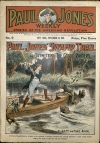
"The Red Raven Library" was continued by "Paul Jones Weekly: Stories of the American Revolution". Nineteen issues were authored by William Wallace Cook (1867-1933) and John DeMorgan under the pen name "Capt. Luther Barr," from 1905-1906. The series' change in direction from "Red Raven" to "Paul Jones" occurred at the time when the remains of American Revolutionary War hero John Paul Jones were being returned with great ceremony to the United States from an obscure burial location in Paris. "Paul Jones Weekly" was published by the Winner Company, an imprint of Street & Smith, New York.
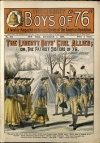
"The Liberty Boys of '76': A Weekly Magazine Containing Stories of the American Revolution" was penned by "Harry Moore," pseudonym of authors Cecil Burleigh (1859-1921) and Stephen Angus Douglas Cox (1865-1944). Over 600 stories were published by Frank Tousey, from 1901-1925. The Revolutionary War was a popular theme of dime novels. In this series, hero Dick Slater and best friend bob Estabrook, lead their militia unit, the Liberty Boys of '76' as it aids every imaginable patriot, engages in nearly every battle, and foils every conceivable foe of the new nation. The boys additionally spend time on the frontier, fighting adversaries including Native Americans.
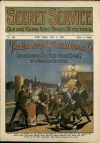
"Secret Service: Old and Young King Brady, Detectives" was published by Frank Tousey from 1899-1912, but detective stories featuring Brady were produced beginning in 1885. Francis W. Doughty (1850-1917) was the series' first author; others were Walter Fenton Mott, Luis Senarens, and Lurana Shelton. The pen name "A New York Detective" was used by all. The leading characters of these tales are the Irish-American, ex-New York police detective, James Brady, and his partners Harry Brady (no relation) and Alice Montgomery. The location of the action can be almost anywhere, but the series is especially known for its scenes of New York City and the Chinatown neighborhoods of both New York and San Francisco.

New York City-based detective Nick Carter first appeared as a main character in dime novels in 1891, having made an earlier, supporting appearance in "New York Weekly" in 1886. Nick Carter continued his exploits in various Street & Smith dime novels for many years. Pulp magazines featuring Carter were also published, but his career outlasted that format as well – he can be found in paperback novels from the 1960s to 1990, having evolved into the 007-type character "Nick Carter, Killmaster." Over the years, the character was featured on the radio and in the movies. Numerous authors contributed stories to this long-running series of series. The "Nick Carter Weekly" (with a few title variations including "New Nick Carter Weekly", seen here) was published from 1897-1912.
The nickel weeklies exhibited here are typical examples, with color covers and 28-32 double-column pages of text per issue. The text is printed on cheaply produced, acidic, pulp paper which is deteriorating at a fast rate.
The magazines are quite fragile but may be used with care at the Burns Library. They are held off-site and must be requested in advance. Contact the Burns Library Reading Room at burnsref@bc.edu or call 617-552-4861.
For further study, visit Burns Library's website for links to information about this exhibit and other resources.
For Further Study
American Women's Dime Novel Project
Jesse James Dime Novel Book Covers
Oberlin College: Walter F. Tunks Collection
Stanford University's Dime Novels and Penny Dreadfuls
Syracuse University Library: Street & Smith Dime Novel Covers

